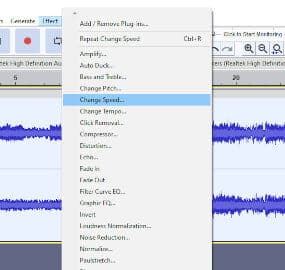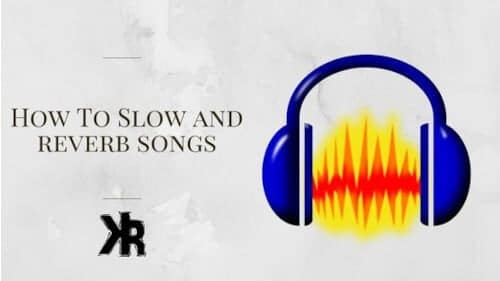Table of Contents
Looking for ways to make your music or a song sound more unique? Adding effects like reverb and changing the speed can be great ways to do it. These effects can help create a more ethereal soundscape for your song.
You can also use them to add drama or suspense, by making the tempo slower or adding sudden changes. This has become a popular thing to do on social media in recent years. And so many people are seeking to learn how to slow and reverb songs.
In this Killer Rig article, we are going to look at how you can change the speed of a song and add reverb in a few different ways.
Slowed And Reverb Meaning
Slowed and reverb is an audio effect where the music is played at a lower speed than usual. Reverb is then added to provide the effect. This has become more popular over the last few years and is also referred to as chopped and screwed.
Chopped and screwed was the original term created by the late DJ Screw. The idea was the same, slow down a song by 80 percent and then add effects, normally the reverb sound. The way people slow and reverb songs today is not quite the same.
How To Slow And Reverb Songs
There are a few different ways that you can slow and reverb songs. One way is to use an audio editing program like Audacity or Adobe Premier Pro. But we suggest Audacity because it’s free and works great.
You can also use your phone, which will need a few apps to get it done, but it’s pretty easy to do.
Audacity
One way to add reverb and change the speed of a song is to use a program like Audacity. Audacity is free, open-source software that allows you to record, edit, and mix audio files.
To begin, download and install Audacity onto your computer. Once it’s installed, open the program and click on the “File” menu at the top of the screen. From here, select “Open” and choose the audio file you want to edit.
Once your song is loaded into Audacity, click on the “Effect” menu and select “Change Speed.” A new window will pop up where you can change the speed of your song. For this example, we’ll slow the song down by 50%.

Next, click on the “Effect” menu again and select “Reverb.” A new window will pop up with a number of different options for adding reverb. For this example, we’ll use the “Room” preset.
Once you’ve applied these effects, you can listen to your song and see how it sounds. If you’re happy with the results, you can export your file by clicking on the “File” menu and selecting “Export.”
Adobe Premier Pro
If you’re using Adobe Premier Pro, the process is a bit different. To begin, open your project in Premier Pro and find the audio file you want to edit. Right-click on the clip and scroll down to the “Speed/Duration” effect.
Change the speed to 50% and click on the ok button at the bottom of the window.
Next, find the “Studio Reverb” effect and expand it. Change the “predelay” to 500 ms and the “decay time” to 2 seconds. Again, click on the ok button to apply the reverb effect.
You can now listen to your song and see how it sounds. If you’re happy with the results, you can export your file by clicking on the “File” menu and selecting “Export.”
Iphone
In order to slow and reverb using your Iphone, you will need 3 apps:
- Safari.
- Video Star.
- GarageBand.
Once you have these apps, you will need to follow these steps:
- Open Safari and go to Google and type in MP3juices.cc. Once on the site, type in the name of the song and download it.
- Share the song you just downloaded on your iPhone with Video star. Once you are in the app, you will need to click on “adjust speed/pitch”. You can then slow the song by moving the dot on the graph between 1/2 and 1. If you like the speed, then make it into a video using the app and share it with your camera roll.
- Go back to Google and search for a video to MP3 converter. When you have found the one you like, upload the video you made. Then have it converted to an MP3. Once it’s complete, download it to your phone.
- You can now use GarageBand to edit the MP3 file and add reverb to your slowed song. Make as many reverb edits as you need until it sounds the way you want.
Popular Slowed and Reverb Songs
There are many popular slowed and reverb songs, and they can be found on various platforms such as YouTube, Spotify, and SoundCloud. Here are some examples:
- “Redbone” by Childish Gambino.
- “Chanel” by Frank Ocean.
- “The Way Life Goes” by Lil Uzi Vert.
- “Ecstasy” by XXXTentacion.
- “Fluxxwave” by Clovis Reyes.
- “Apathy” by Hopsin.
These are just a few examples, and there are many more popular slowed and reverb songs out there.
Conclusion
There are a number of different ways that you can slow and reverb songs. We suggest using Audacity or Adobe Premier Pro if you’re looking for high-quality.
Or a more professional result. If you’re just looking to experiment, you can use your phone and a few apps to get the job done.
Remember to use these for yourself only. Original artists and copyright holders will more than likely not approve of you releasing their modified songs to the world. Enjoy your slowed and reverbed songs!

